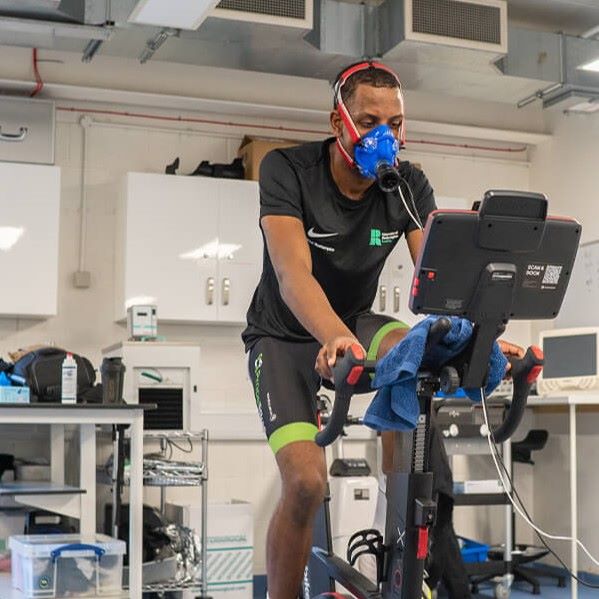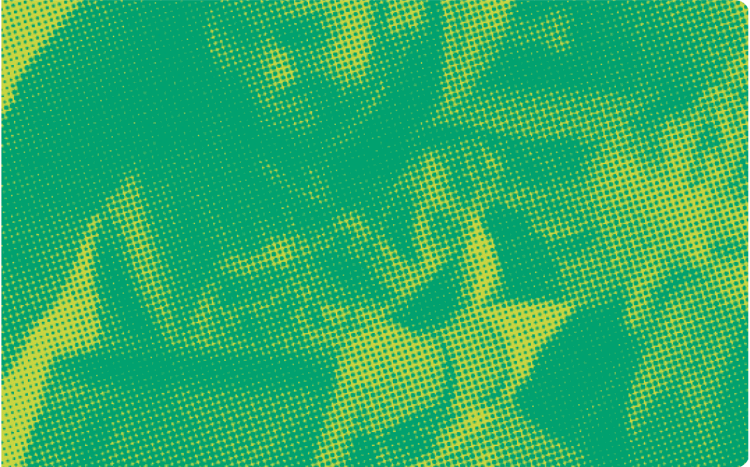UoR Sports Science Services
Make use of our state-of-the-art facilities, cutting-edge testing, and expert support to enhance your health and athletic performance.
Make use of our state-of-the-art facilities, cutting-edge testing, and expert support to enhance your health and athletic performance.

The University of Roehampton’s Sports Science Services offers tailored, scientific testing and support to anyone interested in improving their athletic performance or physical health.
In a relaxed and professional environment, our experts will assess you in one of the state-of-the-art laboratories at the University of Roehampton. Our scientific support team will provide you with the data required to improve your health and optimise your exercise or sports performance.
Normal hours of operation: 9am - 6pm Monday to Friday (If you wish to book a test outside of these hours, please email your request to SES.Tech@roehampton.ac.uk. Please note, we may not be able to accommodate this request).
Ready to train smarter and achieve more? Get expert scientific testing and personalised insights at the University of Roehampton. Book your assessment now and start seeing real results!
In this test frequently undertaken by elite and aspiring athletes, you will be asked to perform a submaximal exercise test followed by an exercise test to volitional exhaustion to allow us to measure your V̇O2max and lactate threshold – two key determinants of endurance performance.
The visit will last ~1h 45, of which you will be required to exercise for ~45 minutes. The test can be conducted on a treadmill or a bicycle.
Following this test, you will be provided with your oxygen uptake, heart rate, lactate, and efficiency data from the submaximal and maximal test stages.
Due to the maximal nature of this test, this test is only suitable for healthy, fit individuals. You will be asked to complete a health screening before your booking can be confirmed.
The full aerobic fitness assessment involves two tests – a submaximal lactate threshold test and a maximal oxygen consumption (V̇O2max) test.
The first test that you will complete is a submaximal Lactate Threshold Test. In this submaximal test, the exercise intensity starts very light (a very light jog) and increases every 3 minutes. You will be required to wear a face mask (for the analysis of your inspired and expired air) and heart rate monitor (provided) throughout this test. At the end of each 3 minute stage, a small blood sample will be taken from your fingertip and analysed*. Your lactate response dictates when the test ends, but it typically involves fewer than ten 3-minute stages. This stage will involve approximately 30 minutes of sub-maximal exercise.
* if you do not wish to have the blood samples taken, the test can be run with the collection of expired air only. We will be unable to measure your lactate threshold but will be able to provide an estimation of it.
Following the submaximal lactate test and a short rest, you will complete an incremental VȮ2max test to volitional exhaustion. The exercise intensity will start submaximal but increase every minute until your final stage is a maximal effort. You will be required to wear a face mask (for the analysis of your inspired and expired air) and heart rate monitor (provided) throughout this test. This test will involve approximately 15 minutes of progressively harder exercise with the final stage being “maximal effort”.
If you are only interested in knowing your V̇O2max, this test is for you. The determination of maximal oxygen uptake or V̇O2max is the gold standard measure of aerobic capacity and having a high V̇O2max is one requirement for successful athletic performance in endurance events.
The visit will last approximately 1 hour of which you will be exercising for ~15 minutes (plus warm-up). The test can be conducted on a treadmill or a bicycle.
Following this test, you will be provided with your oxygen uptake and heart rate data from the maximal test.
Due to the maximal nature of this test, this test is only suitable for healthy, fit individuals. You will be asked to complete a health screening before your booking can be confirmed.
This test involves you completing a single, maximal oxygen consumption (V̇O2max) test.
This test in an incremental test to volitional exhaustion. The exercise intensity will start at a submaximal intensity, but it will increase every minute until your final stage is a maximal effort. You will be required to wear a face mask (for the analysis of your inspired and expired air) and heart rate monitor (provided) throughout this test. This test will involve approximately 15 minutes of progressively harder exercise (following a self-directed warm-up).
If you do not wish to undertake a maximal test (or are unable to do so), but still wish to gain insight into your endurance exercise capabilities the Lactate Threshold Test is the test for you. This submaximal test will give us an insight into how your body reacts to submaximal increases in exercise intensity.
The visit will last approximately 1 hour of which you will be exercising for ~30 minutes.
The test can be conducted on a treadmill or a bicycle
To establish your lactate threshold, you will complete a submaximal test in which the exercise intensity starts very light and increases every 3 minutes. You will be required to wear a face mask (for the analysis of your inspired and expired air) and heart rate monitor (provided) throughout this test. At the end of each 3 minute stage, a small blood sample will be taken from your fingertip and analysed*. Your lactate response dictates when the test ends, but it typically involves fewer than ten 3-minute stages. This stage will involve approximately 30 minutes of sub-maximal exercise.
* if you do not wish to have the blood samples taken, the test can be run with the collection of expired air only. We will be unable to measure your lactate threshold but will be able to provide an estimation of it.
The proportion of total fat mass and lean body mass represents an individual's body composition. Body composition is important for athletic performance and is also a greater determinant of health outcomes than body weight alone.
By using the BodPod, we will non-invasively assess your percentage body fat, fat mass, fat-free mass, total energy expenditure. These data will give you an insight into your body composition and will provide you with an indication of your required daily calorie intake at rest and specific to your activity level.
The visit will last ~30 minutes.
To measure your body composition, you will be required have your height and body mass recorded before taking a seat inside the BodPod two - four times (each time for ~1 minute).
The BodPod is a small, capsule-like piece of equipment that some people may find somewhat claustrophobic; however, you are only required to sit inside the machine for ~1 minute at a time and can exit the machine at any point.
You will be required to wear minimal, tight-fitting clothes and a shower cap. A privacy screen will be in place.
The Resting Metabolic Rate Test is a resting test that allows us to measure your estimated daily caloric requirements. An understanding of your energy needs provides a sound scientific basis for any weight loss or maintenance plan. These data can then be matched with your energy intake if you are wishing to lose, maintain or gain weight
The visit will last ~ 1 hour.
To estimate your resting metabolic rate, we will ask you to lie down on a couch for ~ 40 minutes while wearing a face mask (for the analysis of your inspired and expired air) and heart rate monitor (provided). You will need to lie as still as possible and minimise any distractions.
When competing in hot conditions your performance is compromised. A very effective way to minimise the performance impairments is to undertake training in a controlled hot environment prior to travelling to the event – this is called heat acclimation. Heat acclimation results in physiological adjustments which reduce the strain placed on the body, reduce the perceived temperature and task difficulty, and improve subsequent performance in the heat.
The benefit is dependent upon the time spent being hot; however, beneficial adaptations can occur after only a few sessions, and we can offer a heat acclimation programme to suit your budget and training schedule.
The acclimation sessions can be carried out on a treadmill or a bicycle.
The environmental conditions can be set to mimic the demands you are expecting to face (0 – 55°C; 10 – 90 % relative humidity).
Sessions can be undertaken on consecutive days or every 1 – 2 days depending on your availability.
For your safety and to maximise the effectiveness of your visits, body core temperature will need to be measured. This option involves the use of a rectal thermistor which you will self-insert upon arrival to the laboratory.
Please arrive 15 minutes before your session time to ensure that you get the full hour of heat exposure.
Prior to your visit, one of our scientists will contact you to discuss your specific heat adaptation needs and design your optimal heat adaption session/programme.
Before each heat adaption session, we will ask you to don a heart rate monitor (provided) and self-insert a rectal thermistor. You will then undertake your personalised heat adaptation session.

If you have any questions about our service, drop our friendly team an email.
Contact us